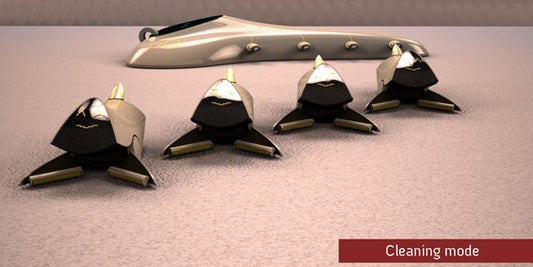Safety floors are an essential feature in many commercial and industrial environments, providing both slip resistance and durability. Whether in healthcare settings, schools, gyms, or industrial spaces, keeping these floors clean and well-maintained is crucial for both hygiene and safety. Over time, dirt, grease, and bacteria can accumulate on the surface, potentially diminishing the floor’s safety features. A deep cleaning regimen is necessary to preserve the floor’s appearance, functionality, and longevity.
Here’s a comprehensive guide to the best way to commercially deep clean safety floors, ensuring they remain safe, hygienic, and in top condition. It is important to firstly understand the material of the safety floor.
- Vinyl safety floors: Often used in healthcare settings due to their ease of maintenance.
- Rubber floors: Common in gyms, schools, and industrial areas.
- Polyurethane floors: Used in high-traffic commercial environments.
- PVC (Polyvinyl Chloride) floors: Frequently used in retail and public spaces.
Each material may have specific cleaning requirements, so it's essential to consult the manufacturer's guidelines before starting.
For a thorough deep clean, you’ll need appropriate equipment and cleaning solutions. Key items include:
- Industrial vacuum cleaner: To remove loose dirt, dust, and debris.
- Rotary scrubber or floor machine: To agitate and scrub the surface effectively.
- Microfiber mop: For gentle yet effective cleaning.
- Cleaning solution: Use a neutral pH cleaner that’s appropriate for the floor type. Avoid harsh chemicals that could damage the floor’s protective coating.
- Wet vacuum: For extracting excess water after cleaning.
- Floor polisher: To restore shine and maintain a smooth surface.
Let’s start cleaning….
Clear the Area - Remove all furniture, equipment and obstacles from the area to ensure thorough cleaning. This helps you reach all corners and edges, preventing areas from being missed.
Dry Clean the Surface - Before applying any cleaning solutions, use an industrial vacuum cleaner to remove dirt, dust, and debris. This helps prevent debris from scratching the floor when it is scrubbed.
Apply the Cleaning Solution - Choose a suitable cleaning solution based on the floor material. Dilute the cleaner as per the manufacturer’s instructions. Apply the cleaning solution evenly across the floor, using a mop or sprayer. Allow it to sit for a few minutes to break down dirt, grease, and grime.
Scrub the Surface - Using a rotary scrubber or floor machine equipped with a soft scrubbing brush or pad, agitate the surface to loosen dirt. Make sure the scrubber covers the entire floor, focusing on high-traffic areas and stains. For rubber and vinyl floors, opt for a medium-speed scrubber to avoid damage.
Rinse the Area - Once the surface has been scrubbed, rinse the area with clean water to remove the detergent residue. This can be done using a mop or scrubber dryer such as the Numatic 244NX. It’s crucial to ensure no cleaner is left behind, as it could leave streaks or a slippery residue.
Extract Excess Water - After rinsing, use a wet vacuum to extract excess water from the floor. This step is particularly important to avoid water pooling, which can be a slip hazard and to prevent damage to the floor material.
Dry the Floor - Allow the floor to dry completely before allowing foot traffic. You can use fans to speed up the drying process, but avoid walking on the floor until it’s fully dry to prevent dirt and debris from being tracked back onto the surface.
Routine Maintenance After Deep Cleaning - Deep cleaning should be followed by regular maintenance to keep safety floors in optimal condition. Routine cleaning involves:
- Daily sweeping or vacuuming: To prevent dirt from accumulating.
- Spot cleaning: Addressing spills and stains promptly.
- Weekly mopping: Using a neutral pH floor cleaner.
- Monthly deep cleaning: Following the steps outlined above to ensure hygiene and safety.




